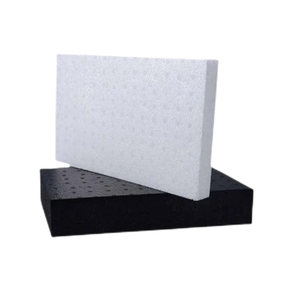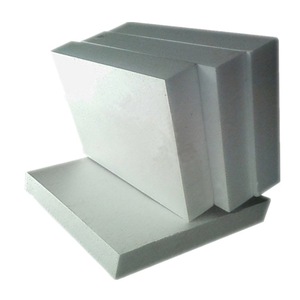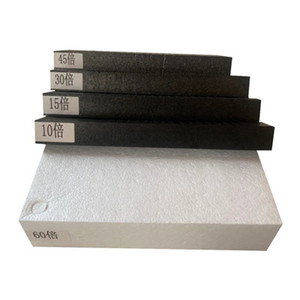
All categories
Featured selections
Trade Assurance
Buyer Central
Help Center
Get the app
Become a supplier

(48848 products available)







![[misoknit] Giant Poodle More thicker more fluffier knitting yarn hand knit <strong>wool</strong> chunky Good Products in The World](http://s.alicdn.com/@sc04/kf/A704a3755a719418a89807303cffe97ddU.jpg_300x300.jpg)
![[misoknit] Giant Poodle More thicker more fluffier knitting yarn hand knit <strong>wool</strong> chunky Good Products in The World](http://s.alicdn.com/@sc04/kf/A19cae951b18b4415a6cb730bbe57f2b1q.jpg_300x300.jpg)
![[misoknit] Giant Poodle More thicker more fluffier knitting yarn hand knit <strong>wool</strong> chunky Good Products in The World](http://s.alicdn.com/@sc04/kf/A5dccd407371f43938f4f0514db0f783ac.jpg_300x300.jpg)
![[misoknit] Giant Poodle More thicker more fluffier knitting yarn hand knit <strong>wool</strong> chunky Good Products in The World](http://s.alicdn.com/@sc04/kf/A05029559144945179b68b918e5aad218r.jpg_300x300.jpg)
![[misoknit] Giant Poodle More thicker more fluffier knitting yarn hand knit <strong>wool</strong> chunky Good Products in The World](http://s.alicdn.com/@sc04/kf/A33e67f7282f74ddb85d7d2345938d813e.jpg_300x300.jpg)







































durability wool is a natural fiber derived primarily from the fleece of sheep and other animals. Known for its warmth, durability, and versatility, durability wool has been utilized for centuries in the textile industry. It is characterized by its crimped structure, which provides excellent insulation properties. durability wool is also renowned for its moisture-wicking ability and resilience, making it a popular choice for clothing, upholstery, and other applications. As a biodegradable and renewable resource, durability wool is increasingly valued for its environmental benefits.
The diversity of durability wool is vast, catering to a range of applications and preferences. Common types include Merino wool, Shetland wool, and Cashmere wool. Merino wool is prized for its softness and fine texture, making it ideal for high-quality garments and activewear. Shetland wool is known for its robust and durable nature, often used in knitwear and outerwear. Cashmere wool, sourced from goats, is exceptionally soft and luxurious, preferred for premium clothing and accessories. Each type of durability wool offers unique characteristics that suit specific needs, ensuring a wide array of options for manufacturers and consumers alike.
durability wool is celebrated for its multifunctional properties that enhance its usability across various sectors. Its natural crimp provides superior insulation, trapping air and retaining heat, which is particularly beneficial in colder climates. The moisture-wicking property of durability wool allows it to absorb moisture without feeling damp, maintaining comfort in varying conditions. Additionally, durability wool is naturally resistant to odors and stains, reducing the need for frequent washing. Its elasticity and resilience enable durability wool to retain its shape over time, contributing to the longevity of woolen products. Furthermore, durability wool is flame-resistant, adding an extra layer of safety in its applications.
The production of durability wool involves careful processing of raw materials to maintain its inherent qualities. The fleece is sheared from animals, cleaned, and sorted based on fiber quality. This process ensures that durability wool retains its softness, strength, and natural properties. Additives such as lanolin, a natural oil found in wool, are preserved to enhance the fiber's moisture-wicking and antibacterial features. Dyeing processes are employed to achieve desired colors while maintaining the integrity of durability wool. Sustainable practices are increasingly adopted to reduce environmental impact, including organic farming and eco-friendly processing techniques.
Utilizing durability wool effectively requires understanding its properties and limitations. Selecting the appropriate type of wool for specific applications is crucial; for example, Merino wool is preferred for base layers due to its softness and breathability. Ensure proper care of durability wool products by following recommended washing and drying instructions to maintain their quality. In fashion, durability wool is often blended with other fibers to enhance durability and texture, providing versatility in design. Educating consumers on the benefits and care of durability wool can enhance its value proposition, promoting its use in sustainable and high-performance apparel.
When selecting durability wool for various applications, understanding the specific characteristics of different types is crucial. Consider factors such as softness, durability, and warmth, which vary across Merino, Shetland, and Cashmere wool. Merino wool, for instance, is ideal for garments requiring breathability and comfort, while Shetland wool offers robustness for outdoor wear. Cashmere, known for its luxurious feel, is perfect for high-end apparel. Aligning the properties of durability wool with the intended use ensures optimal performance and satisfaction.
The sustainability of durability wool is an increasingly important factor in modern textile production. As a renewable resource, wool offers significant eco-friendly advantages. Opting for organically produced durability wool can further enhance its environmental benefits. Additionally, consider the impact of dyeing and processing methods on the environment. Choosing manufacturers that implement eco-friendly practices can contribute to a reduced ecological footprint. Incorporating sustainable durability wool into products aligns with global efforts toward environmental responsibility.
Choosing durability wool for clothing involves assessing the fiber's warmth, softness, and breathability. Merino wool, for instance, is prized for its fine texture and comfort, making it suitable for base layers and activewear. On the other hand, Shetland wool provides durability and is ideal for outerwear. Cashmere wool offers unparalleled softness for luxury garments. Understanding these characteristics allows for informed decisions tailored to specific apparel needs.
durability wool contributes to sustainability through its biodegradability and renewability. As a natural fiber, wool decomposes more easily than synthetic alternatives, reducing landfill waste. Wool production also involves lower energy consumption compared to synthetic fibers. Choosing durability wool from sustainable sources, such as organic farming, enhances its environmental benefits. These factors make wool a preferred choice for eco-conscious consumers.
Yes, durability wool is suitable for upholstery and home textiles due to its durability and aesthetic appeal. Wool's natural resilience and stain resistance make it ideal for furniture coverings, curtains, and carpets. Its insulating properties also contribute to warmth and comfort in home environments. Selecting durability wool for interior applications can enhance both functionality and style.
Maintaining durability wool products requires careful attention to washing and drying practices. Use gentle detergents and avoid high temperatures to preserve the fiber's integrity. Air drying is recommended to prevent shrinkage and maintain shape. Regular brushing can help remove surface dirt and revive the texture. Proper care ensures the longevity and quality of durability wool items.
Blending durability wool with other fibers can enhance its durability, texture, and performance. Combining wool with synthetic fibers like polyester can increase strength and reduce costs. Blends with cotton can improve breathability and softness. These combinations allow for versatile designs and applications, catering to diverse consumer preferences. Understanding the benefits of fiber blends can optimize the use of durability wool in various products.